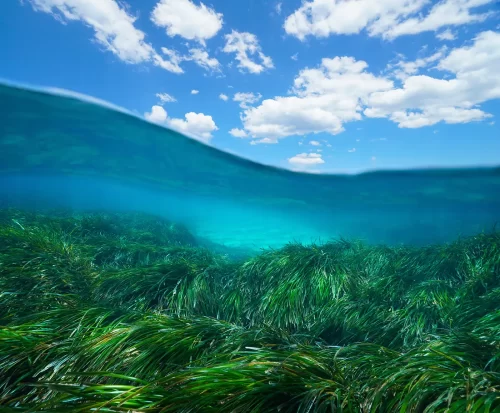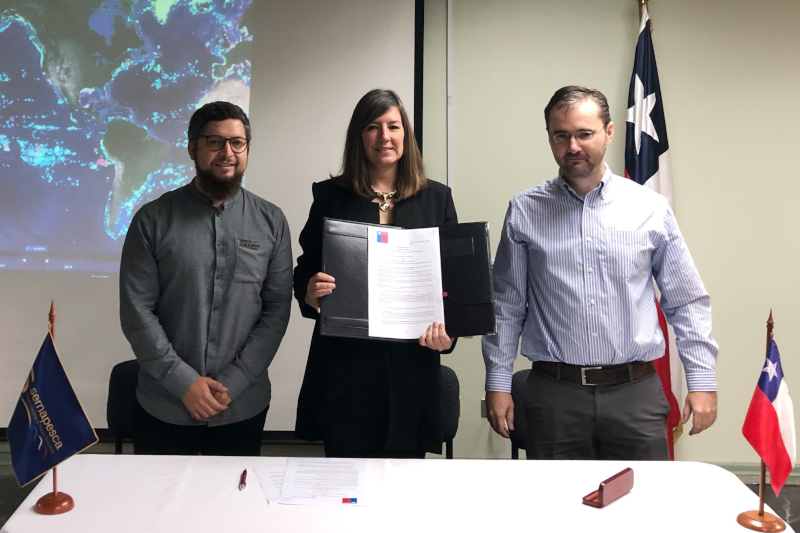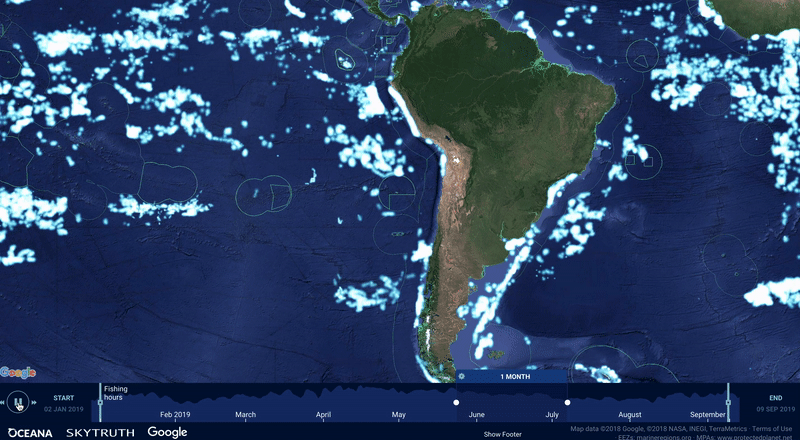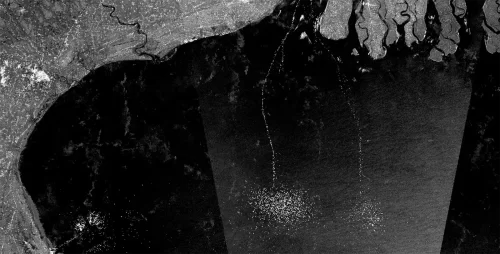
The Issue
Stretching more than 4,000 miles (6,000 kilometers) from north to south, the coast of Chile is the gateway to some of the richest fishing grounds in the world. Representing 4 percent of global production, Chile is the eighth largest fishing nation. Its seafood sector supports 130,000 direct jobs and generates more than US$6 billion in annual export revenues.
Recognizing the importance of conserving its marine resources, Chile has become a global leader in ocean protection. It has created marine protected areas covering just shy of 580,000 square miles (1.5 million square kilometers)— equating to just over 40 percent of the country’s waters—and has helped advance the fight against illegal, unreported and unregulated (IUU) fishing.
But monitoring Chile’s vast waters is challenging. As well as having one of the world’s longest coastlines, the country also needs to monitor its vast exclusive economic zone, which includes remote offshore areas like Easter Island (Rapa Nui) and the Juan Fernández Islands.

Our Work
Chile was one of the first countries to publish its vessel monitoring data on the Global Fishing Watch map. Since sharing this information in 2020, anyone can track the movements and activity of more than 800 of the country’s industrial and small-scale fishing vessels.
Global Fishing Watch started off by mapping the tracks of large industrial vessels, which typically broadcast their positions using automatic identification systems (AIS)—these systems were originally adopted as a collision-avoidance mechanism. But supplementing this data with a country’s own vessel monitoring system adds a whole new level of accuracy, and brings in the many smaller vessels that are not normally equipped with AIS.
The increased transparency created by Chile’s vessel tracking data has helped transform the monitoring and surveillance of the country’s fisheries and marine reserves. Unauthorized vessels and those with a history of noncompliance can now be identified more easily and prioritized for inspections, while vessels that enter no-fishing zones or switch off their tracking devices can be held accountable when they come into port.
At the 34th Session of the Committee on Fisheries, Chile was one of six States to declare the value of transparency in tacking illegal fishing, helping highlight the role of technology and open data across fisheries management in the Committee’s final report.
Chile has also raised the bar on fisheries transparency by committing to share its catch data and logbook information for 2,200 domestic vessels and by supporting Global Fishing Watch’s scientific partners that are conducting research with their public data.
Chile continues to embrace the principles of fisheries transparency and set an example for others in making a positive impact on the management and conservation of fisheries.

"This alliance with Global Fishing Watch is a commitment to transparency, and it is an essential tool for us to have control over the entire fleet in the fishing zone. This way we can visualize the activity of more than 2,200 vessels of the Chilean industrial and artisanal fleet , including transport and aquaculture vessels”.
Fernando Naranjo,National Director of Sernapesca

